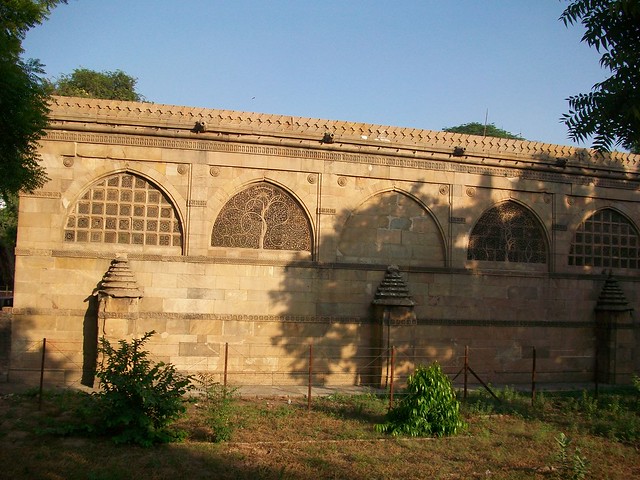By Kashif-ul-Huda, TwoCircles.net
Part 3 of TwoCircles.net series on Gujarat
If one has to choose one image to represent Muslims in Gujarat, it has to be the famous jali of Sidi Saeed Mosque in Ahmedabad. Look closely and you will see a banyan tree occupying the entire screen and enveloping a palm tree. In other words, Muslim presence in Gujarat is a story of an overwhelming acceptance of local culture and tradition while maintaining the Islamic core.
Muslim history in Gujarat spans more than millennia. Some of the oldest mosques of India are found in this region.
Sanjan, a small town 150 km south of Surat is probably the site of the oldest existing masjid of Gujarat. Jami Masjid was built by the founder of short-lived Muslim dynasty [813-841 CE] of Sanjan. Fadl, the founder of the Mahan dynasty build a jama masjid where khutba was read in the name of Abbasid Caliph Mamun.
http://wikimapia.org/5594215/Jamiya-Masjid-Sunnat-Jamat-Sanjan-Bunder
There is some confusion about the oldest mosque of Gujarat. While majority of scholars point to structures in Bhadresvar as the oldest Islamic structure, Maulana Hakim Syed Abdul Hayi author of Yaad-e-Ayyam: Mukhtasir Tareekh-e-Gujarat writes that Madrasa Maulana Ishaq in Bharuch was established in 1038 CE, and Jama Masjid of Bharuch built in 1065 CE.
Two mosques and a tomb in Bhadresvar in Kachh give us a peek into one of the earliest Muslim community of this region. A small community of Muslims built two mosques and a tomb that are one of the first examples of a uniquely Gujarati Islamic architecture. These buildings were probably made by same artisans and architects who were making temples in the region. Chhoti Masjid, Solahkhambi Masjid, and Tomb of Ibrahim were constructed in mid-1100s. These buildings borrow heavily from temple architecture theories but modified according to Islamic injunctions and practices.

Western wall of Sidi Saeed Masjid, last of the famous mosques built in Maru-Gurjara sytle. [TCN Photo]
Scholar Alka Patel in her book Building communities in Gujarat: Architecture and Society during the Twelfth through Fourteenth Centuries argues that architecture that thus developed by temple builders constructing mosques can be placed into Maru-Gujrara style of architecture.
Maru-Gurjara style was prevalent in Rajasthan and Gujarat region. By fifteenth century an architectural treatise Vrksarnava on Maru-Gurjara style included a chapter on construction of mosques or rahmana-prasada. Five hundred years of building mosques gives us some of the most beautiful examples of mosque in stone. Fortunately, most of these mosques have survived and one can easily see this flawless poetry in stones by visiting Junagadh, Cambay, Bharuch, Surat, Champaner, and Ahmadabad.
Links:
http://asi.nic.in/asi_monu_alphalist_gujarat.asp

